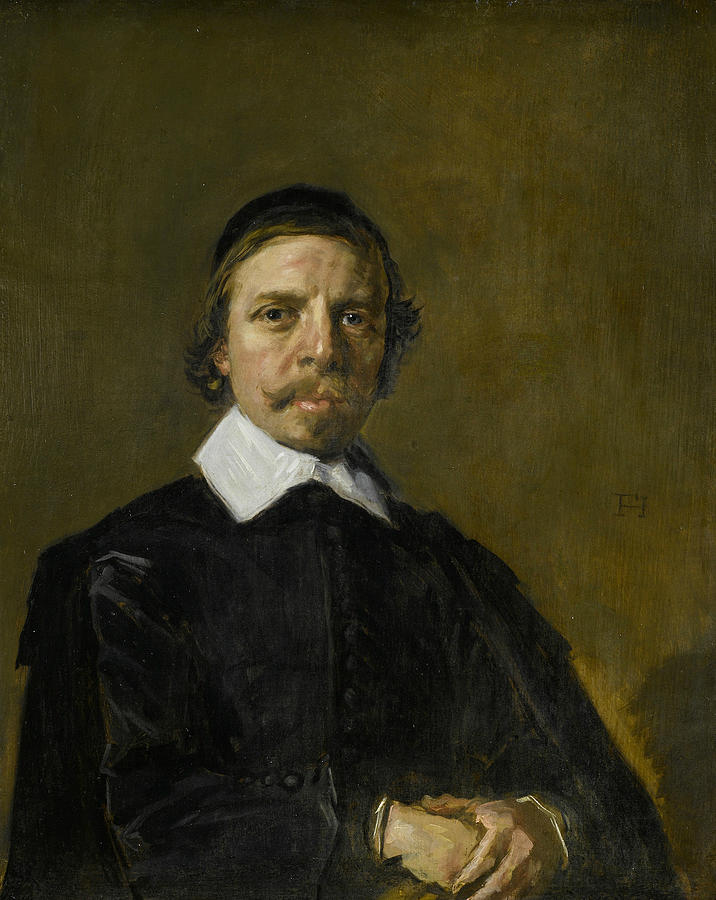

His attire – of which the collar was undoubtedly the most ‘trendy’ element – allows us to date the picture to around 1637-1640.4 It was in this period that Hals reached the height of his fame, prospering both artistically and financially. His black cloak is draped over his left shoulder and wrapped around his middle. He is dressed in a black doublet with a woven pattern of small rosettes and a wide collar edged with bobbin lace and tied with tasselled bandstrings. The man wears a hat with a broad brim and low crown so that the light coming from the upper left casts a shadow over his forehead. Like any other portrait painter seeking to satisfy his client, in painting the face it was only logical for Hals to alter his technique in order to achieve an exact likeness. The lace-edged collar and cuff, for example, consist of nothing more than minimal, accurately placed dabs, with some blue added to the white paint of the cuff in order to suggest the gloss of the material. How dashingly Frans paints people from life Already in 1628 the Haarlem clergyman, poet and chronicler Samuel Ampzing (1590-1632) praised the portraiture. The face is executed with smoother, more flowing strokes than the clothing and the backdrop, where the brushwork is looser.

1 and 2) – but no such work has yet been found. Frans Hals the Elder was a Dutch Golden Age painter, chiefly of individual and group portraits and of genre works, who lived and worked in Haarlem. His bearing suggests that he once had a female companion – pendant portraits were popular among Hals’s patrons (compare figs. He turns to the right and holds his right hand against his breast – a pose often found in Hals’s portraits. The gentleman, sporting an elegant moustache and goatee, is set against an amber-coloured background. To avail ourselves of the old cliché: the only thing missing is his breath. Numerous prominent Haarlem citizens sat for him, among them both Ampzing and Schrevelius.3 Here, too, this otherwise anonymous man is depicted in a most true-to-life manner. Together with Rembrandt, he is rightly considered the most important portraitist of the Dutch Golden Age.
Dutch portrait painter frans free#
are coloured in such a way that they seem to live and breathe.’2 Frans Hals earned his reputation with lifelike depictions and a revolutionary technique, characterised by unusually free and powerful brushwork.

In 1648, the latter, an historian and schoolmaster from Haarlem, wrote of his contemporary: ‘ excels almost everyone with the superb and uncommon manner of painting which is uniquely his. ‘How dashingly Frans paints people from life!’ Already in 1628 the Haarlem clergyman, poet and chronicler Samuel Ampzing (1590-1632) praised the portraiture of his fellow townsman Frans Hals,1 as would Theodor Schrevelius (1572-1649) some 20 years later.


 0 kommentar(er)
0 kommentar(er)
